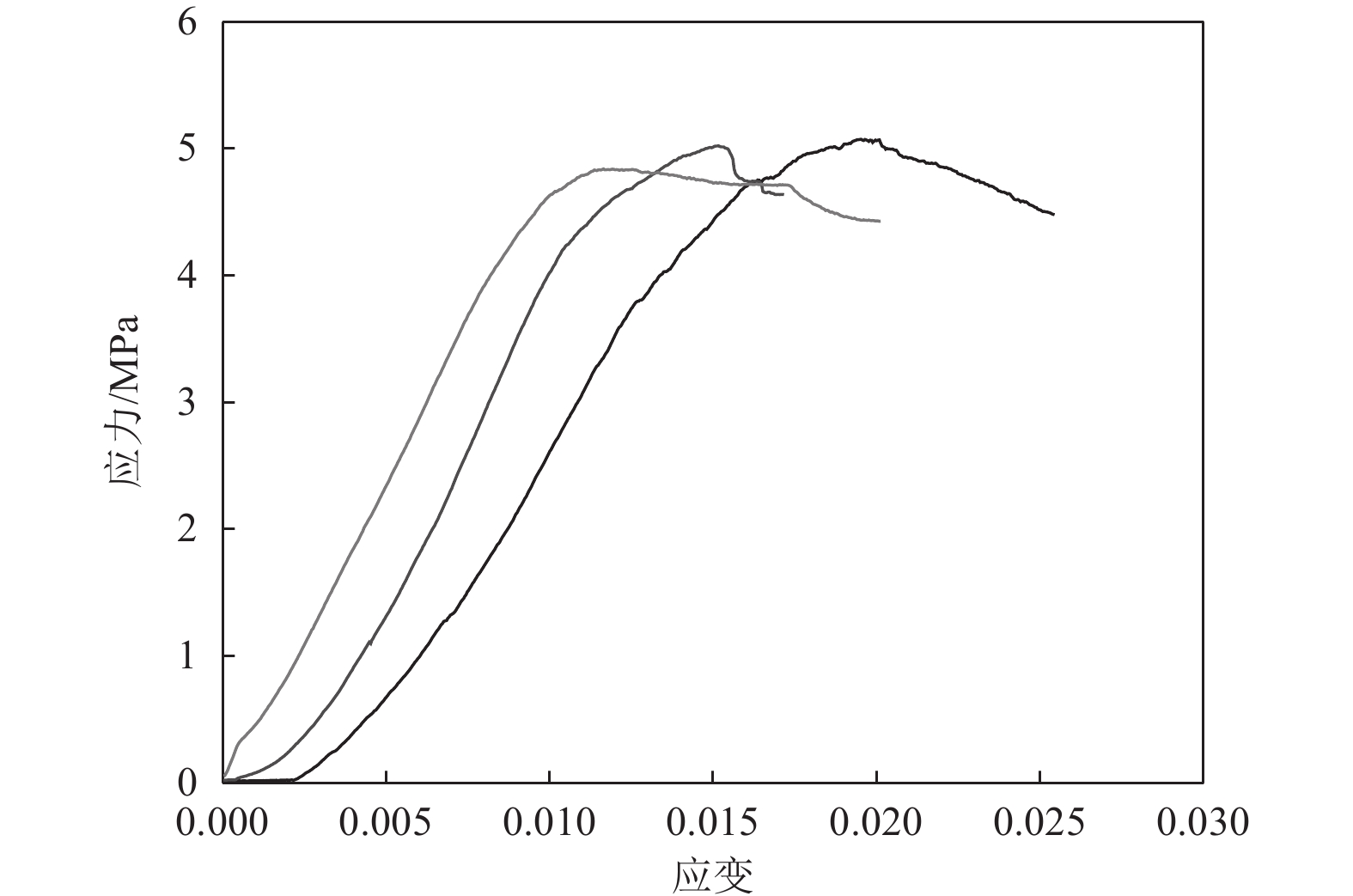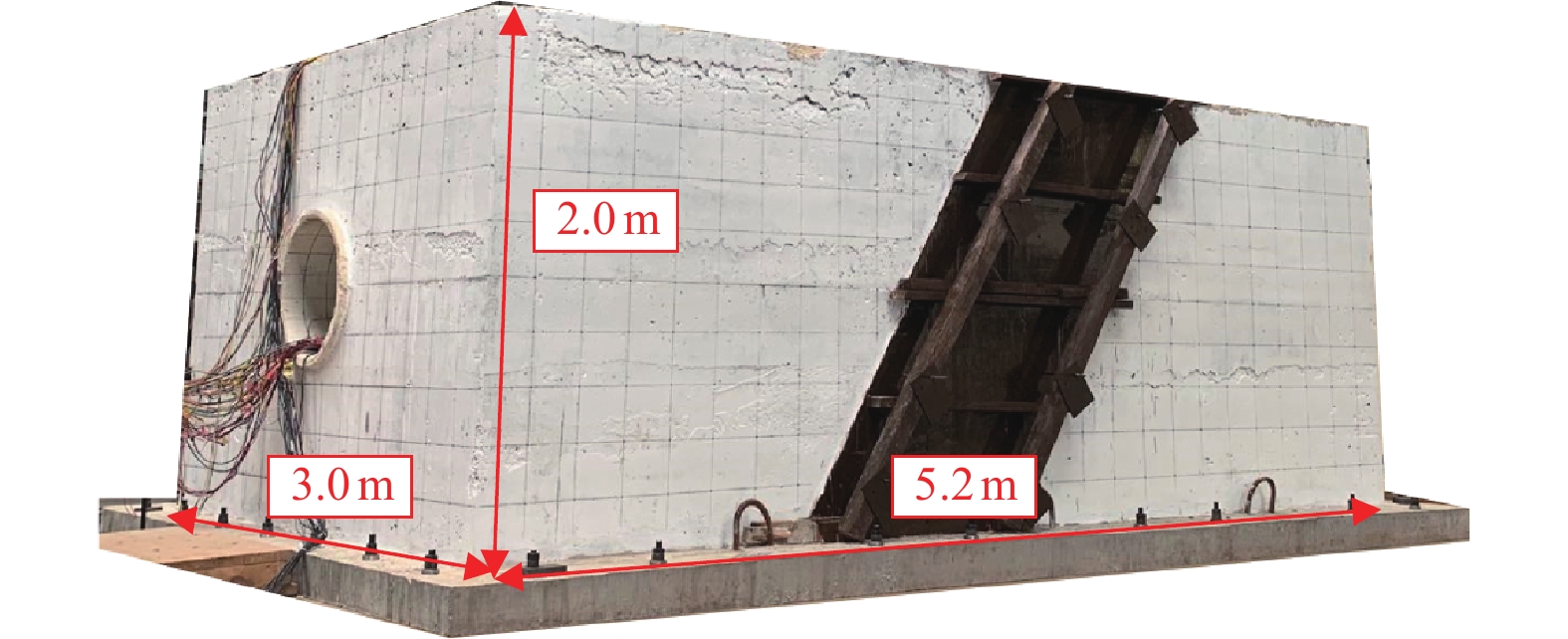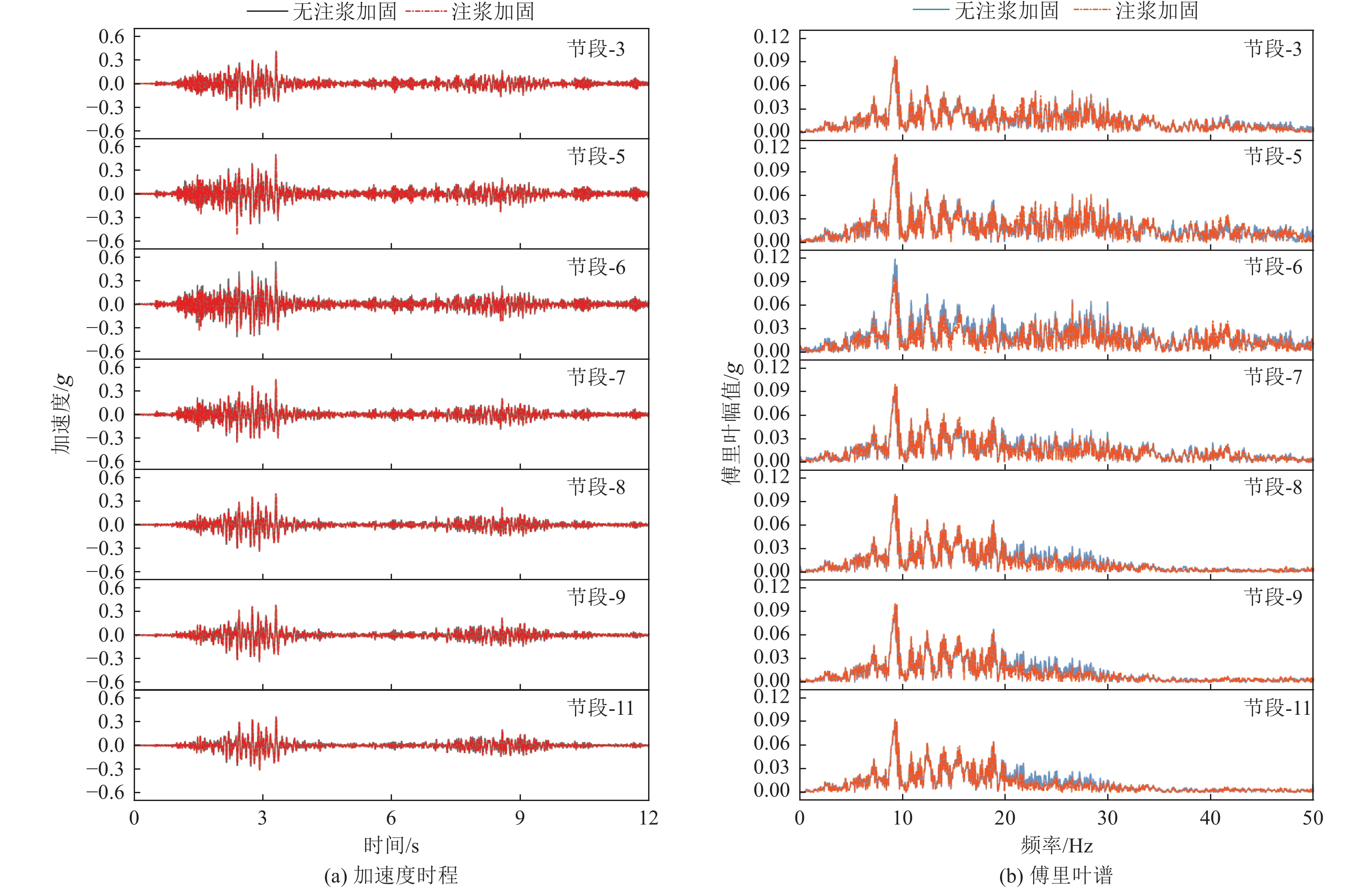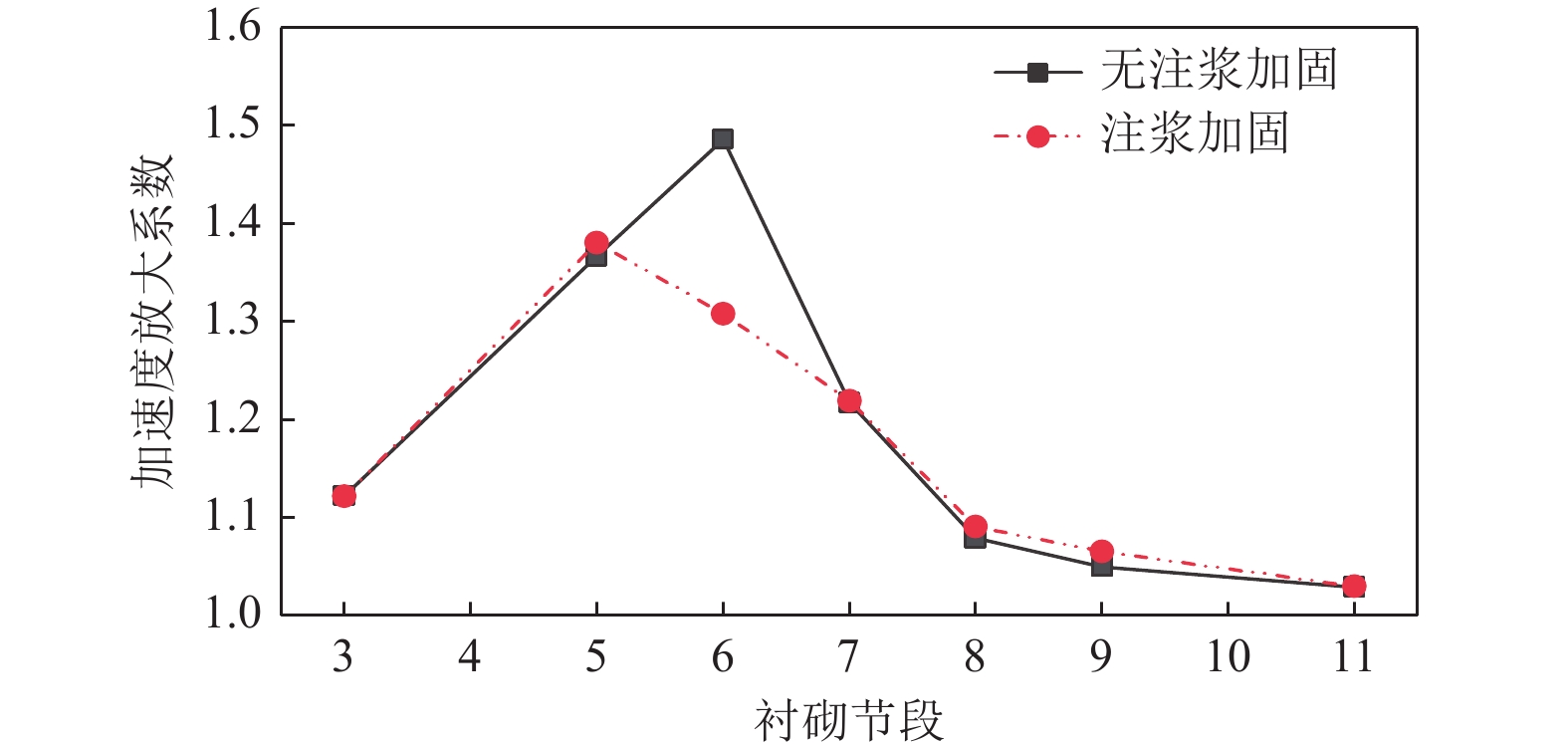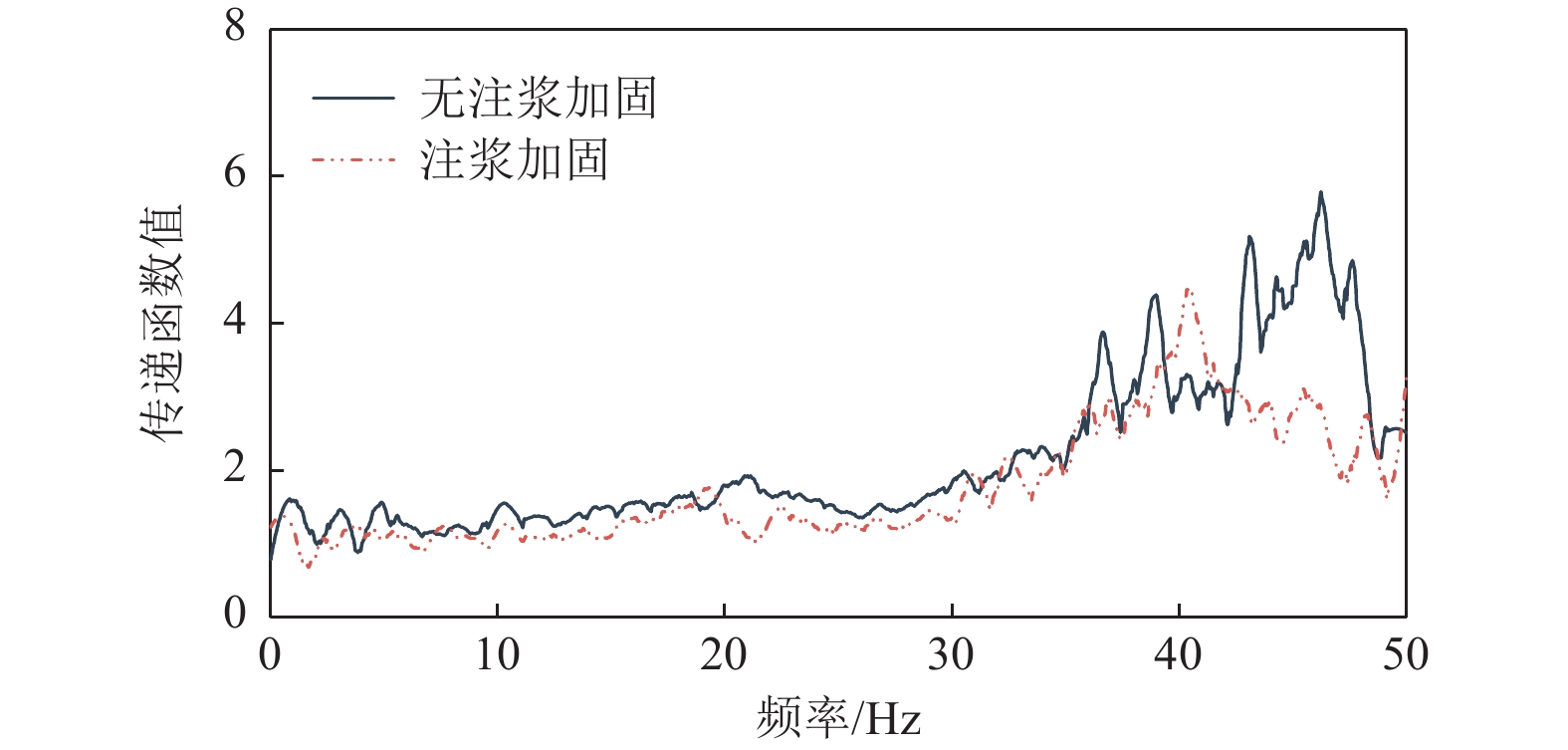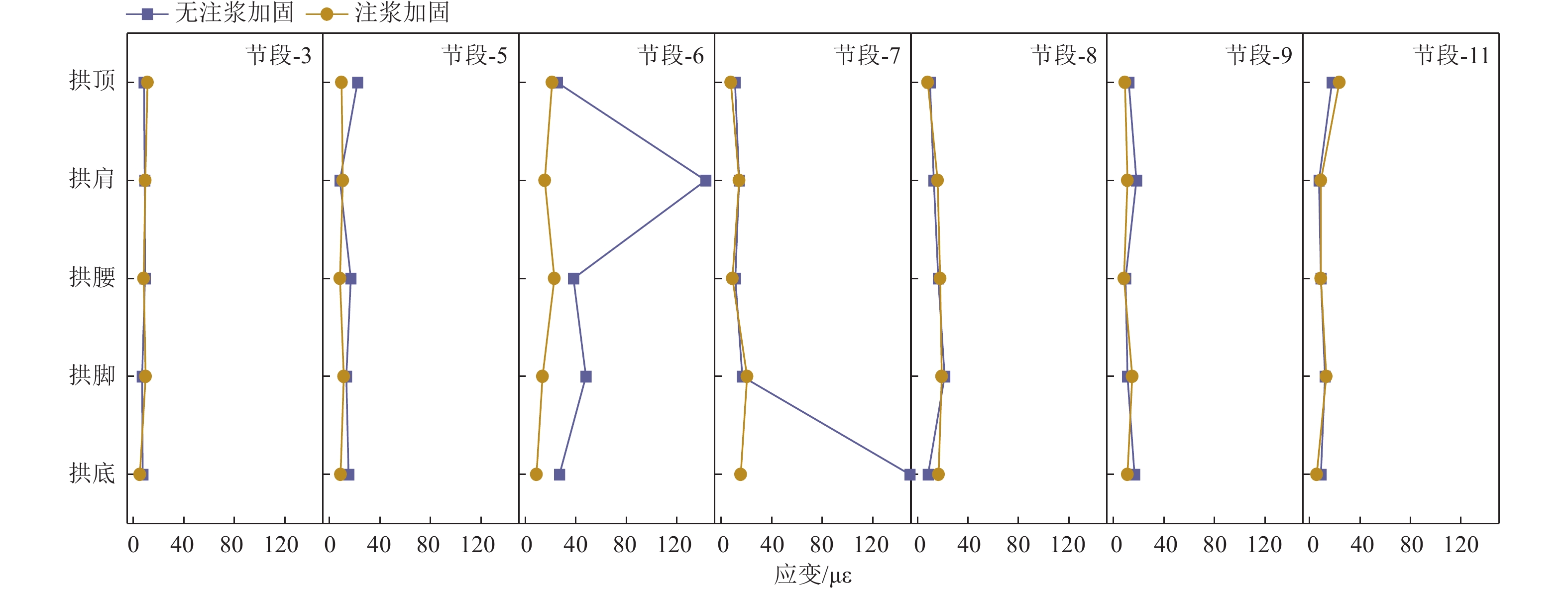Shaking Table Tests on Seismic Mitigation Effect of Grouting Reinforcement in Fault-crossing Tunnels
-
摘要: 隧道跨越断层区段是地震中最容易发生破坏的区域之一。为研究注浆加固断层破碎带对于跨断层隧道的减震机制与效果,设计了断层内有、无注浆加固的2种模型,采用1-g振动台试验,输入汶川地震动记录,测试隧道衬砌的加速度响应和应变响应时程。分析试验结果发现,跨断层隧道的最大加速度响应和最大Arias烈度均位于断层破碎带与上盘岩体交界处,隧道衬砌最大动应变分布在该交界面侧的隧道拱肩部位和断层破碎带侧的拱底部位;注浆加固可以显著减小该处的加速度响应和Arias烈度,并降低隧道衬砌环动应变沿纵向的差异。通过注浆加固破碎带提升断层内隧道周围的地层物理力学特性以减小隧道纵向地层性质差异,可以有效减小跨断层隧道的加速度放大效应与变形差异。Abstract: Tunnel sections crossing fault zones are among the most vulnerable areas to damage during earthquakes. To investigate the seismic mitigation mechanism and effects of grouting reinforcement in fault fracture zone for fault-crossing tunnels, two models with and without grouting reinforcement within fault were designed. A 1-g shaking table was utilized to input the Wenchuan earthquake ground motion records, and the acceleration and strain responses of the tunnel lining were tested. The test results revealed that the maximum acceleration response and Arias intensity of the fault-crossing tunnel were located at the interface between the fault fracture zone and the hanging wall, with the maximum dynamic strain of the tunnel lining distributed at the shoulder of the arch shoulder near the interface and the invert of the arch near the fault fracture zone. Grouting reinforcement significantly reduced the acceleration response and Arias intensity at this location while decreasing the longitudinal differences in the dynamic strain of the tunnel lining. By enhancing the geotechnical mechanical properties surrounding the tunnel within the fault through grouting reinforcement of the fracture zone, the acceleration amplification effect and deformation differences of the fault-crossing tunnel can be effectively reduced, thereby minimizing the longitudinal differences in the tunnel's geological properties.
-
Key words:
- Fault /
- Tunnel /
- Seismic response /
- Shaking table test /
- Grouting reinforcement
-
表 1 振动台试验相似关系
Table 1. Similitude relations for the shaking table test
物理量 相似关系 相似比 长度 L 1/15 密度 FT2L−4 6/25 弹性模量 FL−2 1/60 应变 — 1 质量 FL−1T2 1/14062 速度 LT−1 1/3.79 时间 T 1/3.95 频率 T−1 3.95 应力 FL−2 1/60 加速度 LT−2 1.04 表 2 试验原型和试验模型材料特性
Table 2. Mechanical properties of prototype and model materials
弹性模量/MPa 密度/(kg·m−3) 泊松比 粘聚力/kPa 内摩擦角/(°) 围岩 原型 6000 2300 0.30 700 39 模型 100 560 0.30 25 18 断层破碎带 原型 300 1700 0.35 100 20 模型 5 410 0.35 1.6 19 隧道衬砌 原型 30000 2500 0.20 — — 模型 500 600 0.20 — — 注浆加固 原型 6000 2200 0.30 — — 模型 100 510 0.23 — — 表 3 注浆加固减震效果
Table 3. Seismic mitigation effect of grouting reinforcement
部位 最大附加应变/ με 节段3 节段5 节段6 节段7 节段8 节段9 节段11 拱顶 11.22 (135%) 9.64 (43%) 21.11 (83%) 7.58 (70%) 8.10 (82%) 9.05 (74%) 33.74 (187%) 拱肩 9.34(105%) 10.51 (125%) 15.50 (11%) 14.16 (100%) 16.03 (125%) 11.21 (62%) 9.18 (123%) 拱腰 8.01(88%) 8.36 (50%) 20.02 (60%) 8.87 (79%) 17.87 (108%) 8.34 (88%) 9.23 (101%) 拱脚 9.52(139%) 11.38 (85%) 13.61 (28%) 20.33 (122%) 19.16 (89%) 14.86 (135%) 13.33 (108%) 拱底 5.11(69%) 8.81 (58%) 8.89 (33%) 15.36 (10%) 16.63 (199%) 11.12 (67%) 5.80 (63%) 注:表中百分比为注浆加固模型中隧道衬砌峰值应变与无注浆加固模型中隧道衬砌峰值应变之比。 -
崔光耀, 纪磊, 荆鸿飞, 2019. 高烈度艰险山区跨断层隧道减震层减震技术研究. 地震工程学报, 41(2): 286—291Cui G. Y. , Ji L. , Jing H. F. , 2019. Damping shake technology of the shock absorption layer of fault-crossing tunnels in a dangerous mountainous area with high-intensity earthquakes. China Earthquake Engineering Journal, 41(2): 286—291. (in Chinese) 方林, 蒋树屏, 林志等, 2011. 穿越断层隧道振动台模型试验研究. 岩土力学, 32(9): 2709—2713, 2820Fang L. , Jiang S. P. , Lin Z. , et al. , 2011. Shaking table model test study of tunnel through fault. Rock and Soil Mechanics, 32(9): 2709—2713, 2820. (in Chinese) 耿萍, 吴川, 唐金良等, 2012. 穿越断层破碎带隧道动力响应特性分析. 岩石力学与工程学报, 31(7): 1406—1413Geng P. , Wu C. , Tang J. L. , et al. , 2012. Analysis of dynamic response properties for tunnel through fault fracture zone. Chinese Journal of Rock Mechanics and Engineering, 31(7): 1406—1413. (in Chinese) 何川, 李林, 张景等, 2014. 隧道穿越断层破碎带震害机理研究. 岩土工程学报, 36(3): 427—434He C. , Li L. , Zhang J. , et al. , 2014. Seismic damage mechanism of tunnels through fault zones. Chinese Journal of Geotechnical Engineering, 36(3): 427—434. (in Chinese) 刘国钊, 乔亚飞, 何满潮等, 2020. 活动性断裂带错动下隧道纵向响应的解析解. 岩土力学, 41(3): 923—932Liu G. Z. , Qiao Y. F. , He M. C. , et al. , 2020. An analytical solution of longitudinal response of tunnels under dislocation of active fault. Rock and Soil Mechanics, 41(3): 923—932. (in Chinese) 王李斌, 崔光耀, 荆鸿飞, 2019. 高烈度地震区跨断层隧道围岩注浆抗震效果研究. 高速铁路技术, 10(3): 25—29Wang L. B. , Cui G. Y. , Jing H. F. , 2019. Study on anti-seismic effect of surrounding rock grouting of fault-crossing tunnels in highly seismic area. High Speed Railway Technology, 10(3): 25—29. (in Chinese) An D., Chen Z., Meng L. H., et al., 2020. Application of fiber-reinforced concrete lining for fault-crossing tunnels in meizoseismal area to improving seismic performance. Advances in Mechanical Engineering, 12(7): 168781402094402. Fan L. , Chen J. L. , Peng S. Q. , et al. , 2020. Seismic response of tunnel under normal fault slips by shaking table test technique. Journal of Central South University, 27(4): 1306–1319. doi: 10.1007/s11771-020-4368-0 Hashash Y. M. A. , Hook J. J. , Schmidt B. , et al. , 2001. Seismic design and analysis of underground structures. Tunnelling and Underground Space Technology, 16(4): 247–293. doi: 10.1016/S0886-7798(01)00051-7 Jiao H. Y. , Du X. L. , Zhao M. , et al. , 2021. Nonlinear seismic response of rock tunnels crossing inactive fault under obliquely incident seismic P waves. Journal of Earth Science, 32(5): 1174—1189. doi: 10.1007/s12583-021-1483-2 Ma Y. , Sheng Q. , Zhang G. M. , et al. , 2019. A 3 D discrete-continuum coupling approach for investigating the deformation and failure mechanism of tunnels across an active fault: a case study of Xianglushan tunnel. Applied Sciences, 9(11): 2318. doi: 10.3390/app9112318 Shen Y. S. , Gao B. , Yang X. M. , et al. , 2014. Seismic damage mechanism and dynamic deformation characteristic analysis of mountain tunnel after Wenchuan earthquake. Engineering Geology, 180: 85–98. doi: 10.1016/j.enggeo.2014.07.017 Wang X. W. , Xiong Q. R. , Zhou H. , et al. , 2020. Three-dimensional (3 D) dynamic finite element modeling of the effects of a geological fault on the seismic response of underground caverns. Tunnelling and Underground Space Technology, 96: 103210. doi: 10.1016/j.tust.2019.103210 Yan G. M. , Shen Y. S. , Gao B. , et al. , 2020. Damage evolution of tunnel lining with steel reinforced rubber joints under normal faulting: An experimental and numerical investigation. Tunnelling and Underground Space Technology, 97: 103223. doi: 10.1016/j.tust.2019.103223 Yang Z. H. , Lan H. X. , Zhang Y. S. , et al. , 2013. Nonlinear dynamic failure process of tunnel-fault system in response to strong seismic event. Journal of Asian Earth Sciences, 64: 125–135. doi: 10.1016/j.jseaes.2012.12.006 Yashiro K. , Kojima Y. , Shimizu M. , 2007. Historical earthquake damage to tunnels in japan and case studies of railway tunnels in the 2004 Niigataken-Chuetsu earthquake. Quarterly Report of RTRI, 48(3): 136–141. doi: 10.2219/rtriqr.48.136 Zhao X. , Li R. H. , Yuan Y. , et al. , 2022. Shaking table tests on fault-crossing tunnels and aseismic effect of grouting. Tunnelling and Underground Space Technology, 125: 104511. doi: 10.1016/j.tust.2022.104511 Zhong Z. L. , Wang Z. , Zhao M. , et al. , 2020. Structural damage assessment of mountain tunnels in fault fracture zone subjected to multiple strike-slip fault movement. Tunnelling and Underground Space Technology, 104: 103527. doi: 10.1016/j.tust.2020.103527 -



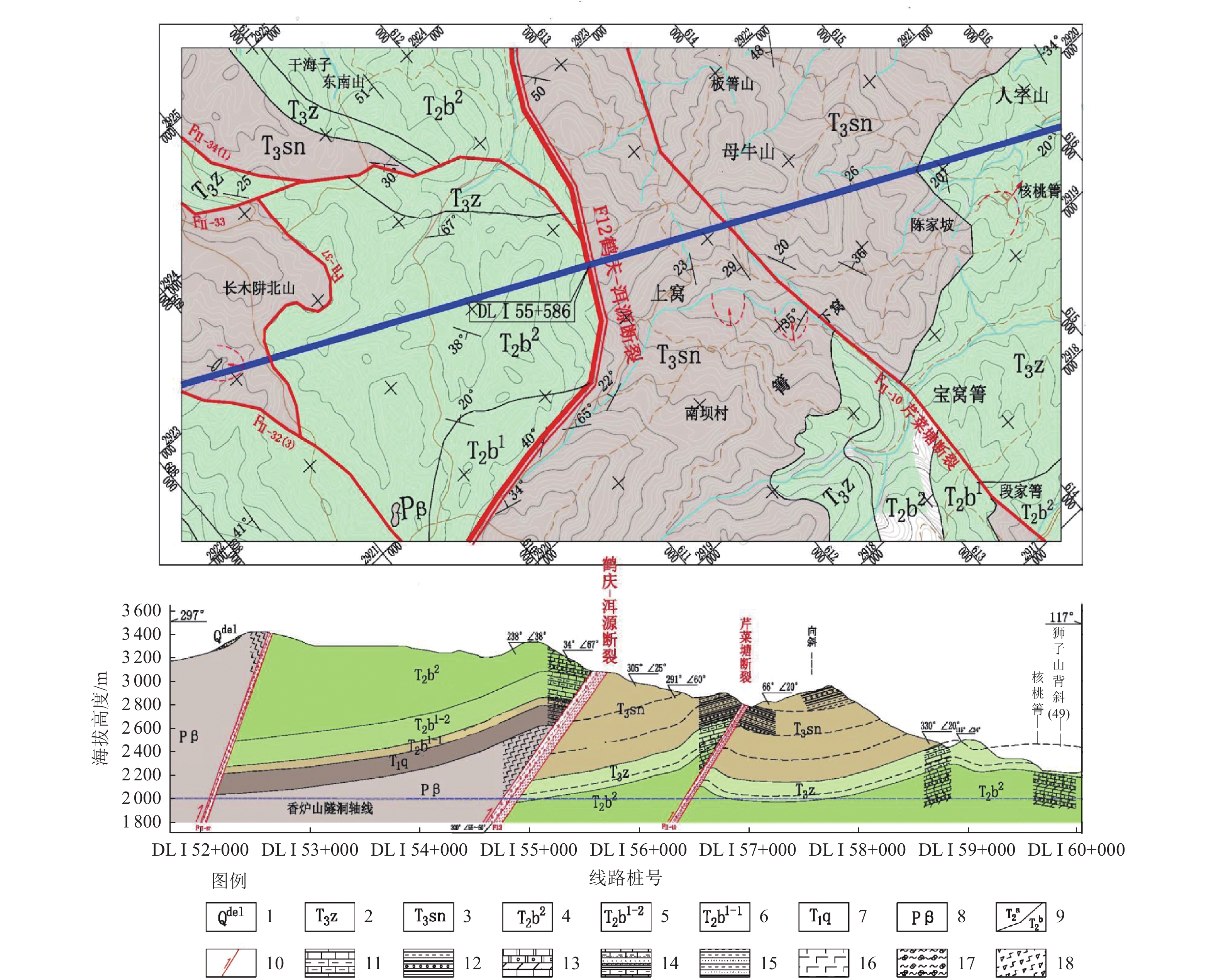
 下载:
下载:
